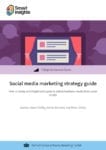344 social media managers confirm that social media positively influencers revenue and sales
Social media is everywhere and is vastly expanding - but what effect do the various social platforms have on a company's brand awareness, engagement, revenue, and sales?
Because of the range of platforms available it can be difficult to know where to start, what platforms your target audience is using, and what content to share to increase engagement.
Download Paid Member Resource – Social Media Strategy Guide
Understand how to best use social media in your marketing strategy as an individual or as a business.
Access the Social media marketing strategy guide
Smart Insights partnered up with Clutch, a service which helps businesses make B2B buying decisions, to find out what and how social media is being used in marketing and its effects on content distribution.
You can view the full free report here.
Over half of those surveyed (52%) said that social media has positively influenced revenue and sales.
It is expected that as social media ages the number of companies that view social media as a positive influence will increase.
What are the leading social platforms?
It was reported that Facebook (89%) and LinkedIn (83%) are the most valued social media platforms to use, which is no surprise as Facebook has the largest user rate and LinkedIn has been created with B2B objectives and aims in mind, making it a perfect platform to generate leads and increase conversion.
Facebook has a wide range of users globally, making it a perfect platform for companies to target their desired customer. With features like groups, pages and 'likes' it can also bring together a group of users with similar interests making it much easier for brands to target a larger audience all with their desired personas.
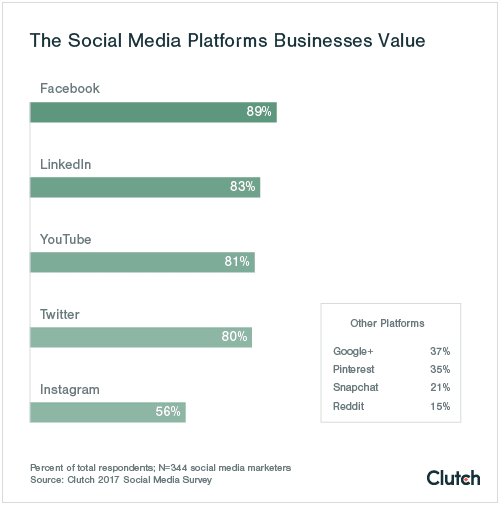
Instagram is a great platform for companies and brands that rely heavily on visuals and storytelling to increase engagement, generate leads and convert potential customers. National Geographic is a perfect example of this, with high-definition images and long captions to help increase their followers' emotions

Other social media platforms that are popular include Youtube, Twitter, and Instagram. However, platforms such as Google+, Pinterest, Snapchat, and Reddit remain low in value.
Pinterest, a visuals board, can give the same content to target audiences as Instagram (a more popular social platform), and with the integration of stories and filters on Instagram and Facebook it has rendered Snapchat's trademark media platform obsolete in the eyes of many businesses. However, Snapchat remains the social platform teenagers spend the most time on, making it a valuable asset to your marketing strategy if your brand's target audience is Generation Z.
What content engages customers?
With users scrolling through 300 feet of content per day, Kat Hahn from Facebook suggests how brands can stand out, in a way that reflects the way users consume content on social media:
- On the go - short and snappy
- Lean forward - interactive content
- Lean back - immersive content, longer and goes into detail
Content on social media should educate and engage your audience - make sure that the content positively reflects your brands' aims and purpose.
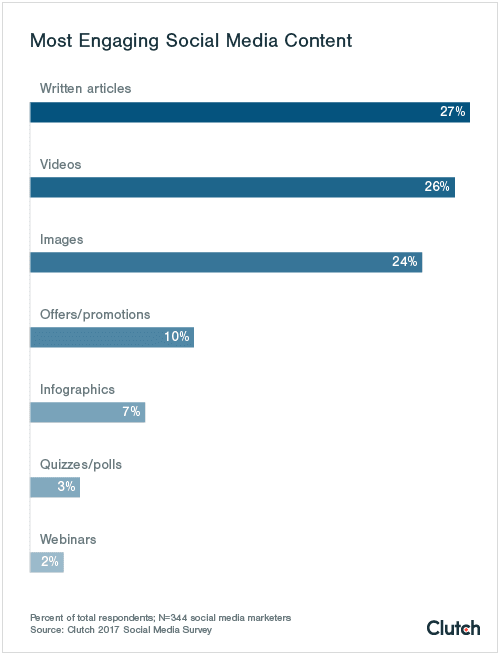
According to the report, written articles (27%), videos (26%), and images (24%) are the three most engaging content on social media.
Videos and images are great types of content that appeal to social users that want quick and easy to digest information.
"These content types are effective in getting cut-through in newsfeeds, so it is important not only to use these types of content but to invest in them so the quality is there" - Dave Chaffey, Smart Insights CEO / Co-founder
Visual content is easier to share on social making its distribution potential larger and reaching a wider and more diverse audience.
Surprisingly, promotions/offers and infographics don't perform as well as articles, videos, and images. This may be due to users wanting to first understand the brand, its values, aims and purpose before rushing to a purchase - asking themselves what can this product/service do for me?
Original vs shared content
Nearly 80% of businesses share mostly original content and only 19% of companies share only original content.
Sharing and posting content that only your company produces increases your own brand awareness and shows customers more about yourself.
Sharing your own content that has not been published/seen anywhere else can drive higher engagement, after all, users don't want to see the same content on their social feeds. producing original content can increase engagement rates with your brand.
What engagement metrics are most important?
Engagement and conversion rates remain the most popular metrics. If a post is successful it will have high engagement rates (likes, comments, and shares) and equally high conversions.
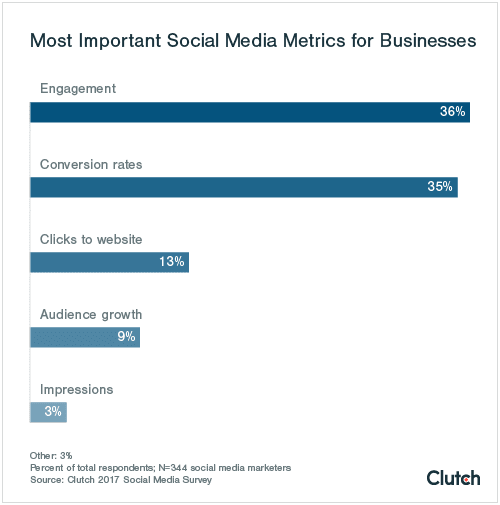
When considering other metrics such as impressions, this remains the least important at 3%. Impressions refer to the amount of users' feed your post has reached:
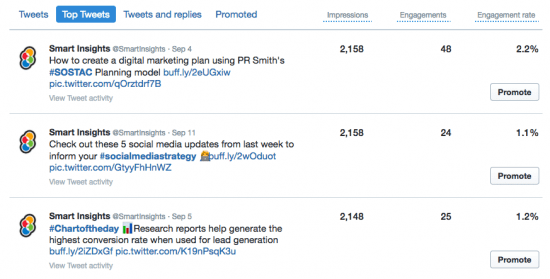
How do B2C and B2B companies use social media differently?
58% of B2C companies said social media has a more positive influence on the revenue and sales than B2B - purchasing decisions are more likely to occur on social media for B2C customers than B2B.
However, social platforms differ between B2C and B2B companies.
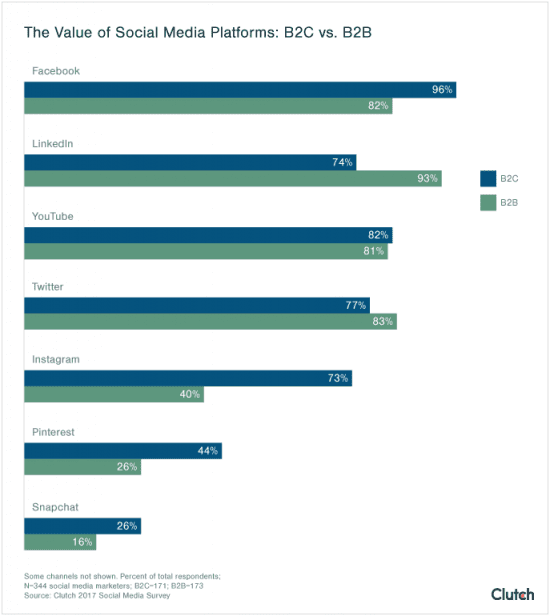
Facebook still remains the most valuable social platform for B2C companies, with many of their customers making purchasing decisions online. However, LinkedIn (93%) is the most valuable social platform for B2B companies and then Twitter (83%).
This is because of the professional nature of these platforms, it's much easier to reach and engage with business professionals and professional company pages/profiles.
The challenges of social media
With many disruptors in social, it can be hard to make your brand be seen, but many challenges of social media marketing include the admin behind it.
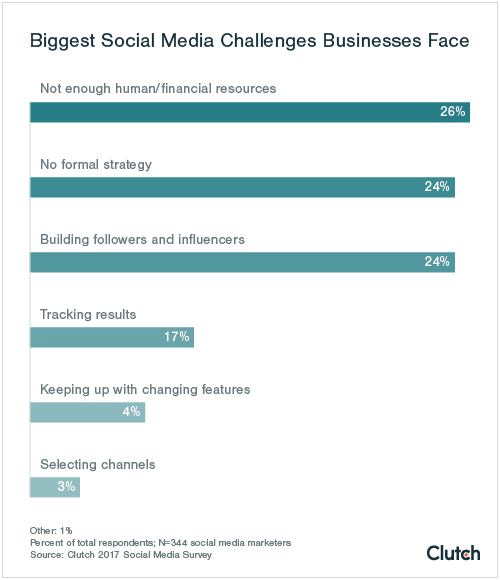
The top three challenges to social media marketing are:
- Not enough resources, including human and financial
- No formal strategy in place
- Building followers and social media influencers
Having no formal strategy in place is a massive obstacle - without one it will be hard to see direction, plan content and track key metrics to constantly manage and optimize engagement and leads.
Key Takeaways
- 52% of businesses say that social media positively influencers revenue and sales
- Nearly 80% of businesses share mostly original content
- 44% of companies use social media management software
- Only 28% of companies use social media marketing agencies
- More B2C companies (53) consider investing more time and money in social media valuable than B2B companies (46%)
- Written articles (27%), videos (26%), and images (24%) are the three most engaging types of content on social media



